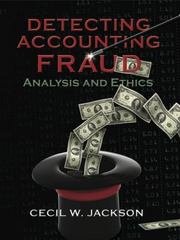Question
Question 1 In order to be able to describe where something can be found in the Income Tax Act (ITA), one needs to become familiar
Question 1
In order to be able to describe where something can be found in the Income Tax Act (ITA), one needs to become familiar with how to correctly cite the provisions.
a) Some subsections have more than . How does the ITA deal with this? For example, which paragraph follows paragraph 20(1)(z)? b) Most sections have a subsection, but not all do. From Division B, Sub-division c, provide an example of a section that does not have a subsection.
c) When a definition appears in a citation, the word being defined must form part of the citation. For example, the "balance-due day" (i.e. the day that the payment of any balance of taxes owing is due) for a trust is 90 days after the end of the year. This rule is set out in the definition of "balance-due day". Can you find and state the citation that gives the authority for this rule?
d) Reading references within the ITA can sometimes be confusing. For example, in subsection 13(7.3), it states: "For the purposes of paragraph (7)(e), ..." On which page of the ITA would we find this "paragraph (7)(e)" that is referred to?
e) Which section number is the section between section 39 and section 40?
f) Which subsection number is the subsection between subsections 6(1) and 6(2)?
g) What is the section number between sections 118.8 and 118.9?
Question 2 One of the difficulties in reading the ITA is that it often uses common, everyday words, in a non-intuitive, defined way. For example, briefly skim section 67.2 and note that it limits the amount deductible as an interest expense on money borrowed to purchase a "passenger vehicle". Given your understanding of what a taxi generally is, do you think this limitation on interest deductibility applies to interest on money borrowed to acquire a "taxi"?
Question 3 Another complication with definitions is that their scope (i.e. the portion of the ITA to which they apply) is often very specific. What is the scope of the definitions found in: a) Subsection 248(1)? b) Subsection 125(7)? FMGT 3410 - HOMEWORK #1 c) Subsection 146(1)? d) Section 54?
Question 4 Find the table at the front of the ITA that shows the Personal Income Tax Rate Components a) Ignoring the issue of any tax credits that may be available (since we will not study this topic until Tax 2), how much federal tax would an individual have to pay on $40,000 of taxable income in 2020? b) What would the answer be to (a) if the amount was $97,069? c) Considering only federal taxes, if the same individual had $97,070 of taxable income, what would the marginal tax rate and average tax rate be? d) What is the combined federal and provincial marginal tax rate for an individual living in British Columbia who has taxable income of $250,000 in 2020?
Question 5 Assuming the deduction of the basic personal tax credit that was ignored in the previous question, answer the following: a) How much combined federal and provincial tax would an individual living in British Columbia have to pay on $100,000 of taxable income in 2020? b) Suppose a husband and wife living in British Columbia were to each earn $50,000 (i.e. their family income is $100,000), how much combined federal and provincial tax would this family have to pay in 2020? c) What is the difference in total tax owing to federal and provincial governments, between (a) and (b) above? Why does this difference arise? What is the tax planning strategy that attracts taxpayers on account of this set of circumstances?
Question 6 Using the sectional list at the beginning of the ITA, identify the provision which deals with each of the following items: a) Value of benefits received by employees. b) Interest income from property. c) Definition of "principal residence" for the purpose of calculating the capital gain on the sale of an individual's home. d) Support payments received from a divorced spouse. Be as specific as possible in citing the reference to the Act, i.e. Part, Division, Subdivision, Section, Subsection, etc
. Question 7 In 2018, Mr. C acquired 2,000 shares of Isotech for $3.00 per share including brokerage fees. In 2020, Mr. C sold 1,000 share of Isotech for $5.00 per share, and also paid $35.00 in brokerage fees on the disposal. In 2020, how much is Mr. C's: a) Gain? b) Capital Gain? c) Taxable Capital Gain?
Step by Step Solution
There are 3 Steps involved in it
Step: 1

Get Instant Access to Expert-Tailored Solutions
See step-by-step solutions with expert insights and AI powered tools for academic success
Step: 2

Step: 3

Ace Your Homework with AI
Get the answers you need in no time with our AI-driven, step-by-step assistance
Get Started


